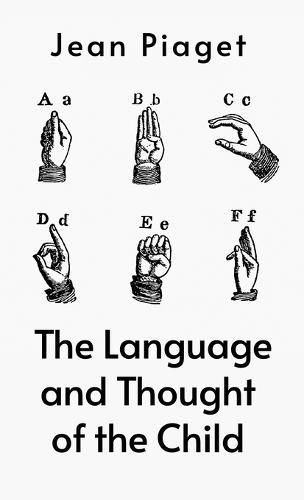Readings Newsletter
Become a Readings Member to make your shopping experience even easier.
Sign in or sign up for free!
You’re not far away from qualifying for FREE standard shipping within Australia
You’ve qualified for FREE standard shipping within Australia
The cart is loading…






This title is printed to order. This book may have been self-published. If so, we cannot guarantee the quality of the content. In the main most books will have gone through the editing process however some may not. We therefore suggest that you be aware of this before ordering this book. If in doubt check either the author or publisher’s details as we are unable to accept any returns unless they are faulty. Please contact us if you have any questions.
Jean Piaget was one of the most salient and inspirational figures in psychological and educational research this century. He was prolific, authoring or editing over eighty books and numerous journal papers which have spawned a huge and fertile continuation of his research over the decades. A major component of any course on children's psychological development and a research tradition that is expanding, scholars need access to the original texts rather than relying on secondhand accounts. Piaget wanted to revolutionize the way research methods were conducted. Although he started researching with his colleagues using a traditional method of data collection, he was not fully satisfied with the results and wanted to keep trying to find new ways of researching using a combination of data, which included: naturalistic observation, psychometrics, and the psychiatric clinical examination, in order to have a less guided form of research that would produce more genuine results. As Piaget developed new research methods, he wrote "The Language and Thought of the Child," which aimed to synthesize the methods he was using in order to study the conclusion children drew from situations and how they arrived to such conclusion. The main idea was to observe how children responded and articulated certain situations with their own reasoning, in order to examine their thought processes.
$9.00 standard shipping within Australia
FREE standard shipping within Australia for orders over $100.00
Express & International shipping calculated at checkout
This title is printed to order. This book may have been self-published. If so, we cannot guarantee the quality of the content. In the main most books will have gone through the editing process however some may not. We therefore suggest that you be aware of this before ordering this book. If in doubt check either the author or publisher’s details as we are unable to accept any returns unless they are faulty. Please contact us if you have any questions.
Jean Piaget was one of the most salient and inspirational figures in psychological and educational research this century. He was prolific, authoring or editing over eighty books and numerous journal papers which have spawned a huge and fertile continuation of his research over the decades. A major component of any course on children's psychological development and a research tradition that is expanding, scholars need access to the original texts rather than relying on secondhand accounts. Piaget wanted to revolutionize the way research methods were conducted. Although he started researching with his colleagues using a traditional method of data collection, he was not fully satisfied with the results and wanted to keep trying to find new ways of researching using a combination of data, which included: naturalistic observation, psychometrics, and the psychiatric clinical examination, in order to have a less guided form of research that would produce more genuine results. As Piaget developed new research methods, he wrote "The Language and Thought of the Child," which aimed to synthesize the methods he was using in order to study the conclusion children drew from situations and how they arrived to such conclusion. The main idea was to observe how children responded and articulated certain situations with their own reasoning, in order to examine their thought processes.